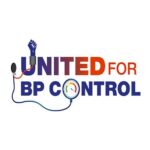Lack of oxygen during labor and pregnancy for the fetus is probably one of the reasons
New Delhi, November 11, 2017: There are about 25 lakh children and adults in India with cerebral palsy (CP). The incidence of this condition around the world is 2 to 2.5 cases per 1000 live births. In most people with CP, the cause is unknown, and the condition has no known cure. As per the IMA, the treatment options for this disorder in India is currently limited to palliative care
CP is an umbrella term covering a group of non-progressive, but often changing, motor impairment syndromes secondary to lesions or anomalies of the brain arising in the early stages of development (i.e., up to 5 years). It includes various kinds of disabilities such as difficulty in coordinated and alternate movements, abnormal movements and postures, and difficulty in keeping the body in antigravity postures.
Speaking about this, Padma Shri Awardee Dr K K Aggarwal, National President Indian Medical Association (IMA) and President Heart Care Foundation of India (HCFI) and Dr RN Tandon – Honorary Secretary General IMA in a joint statement, said, “Cerebral palsy may only be mild and cause only a slight disruption to a person’s daily life. It can also be more severe, affecting the whole body and may significantly impact how a person participates in daily activities. There are three predominant types of cerebral palsy and each are characterized by different movement patterns. Movements can be uncontrolled or unpredictable, muscles can be stiff or tight and in some cases people have shaky movements or tremors. Most people with cerebral palsy have a normal life expectancy. The damage to the brain that causes cerebral palsy does not progress (get worse) as the person gets older. This condition is also not contagious.”
Some signs and symptoms of this condition include overdeveloped or underdeveloped muscles; poor coordination and balance; involuntary movements; stiff muscles that contract abnormally; crawling in an unusual way; lying down in awkward positions; favoring one side of the body over the other; and a limited range of movement.
Adding further, Dr Aggarwal, said, “Some newborns may be deprived of oxygen during labor and delivery. Research indicates that fewer than 1 in 10 cases of cerebral palsy stem from oxygen deprivation during birth. In most cases, the damage occurs before birth, probably during the first 6 months of pregnancy. People with cerebral palsy have problems with communication and learning. Cerebrum damage can sometimes affect vision and hearing as well.”
Some preventive measures can help reduce the risk of cerebral palsy in children. A woman who is planning to become pregnant should ensure that all her vaccinations are up-to-date. Additionally, it is important to:
- Attend all antenatal appointments
- Quit alcohol, tobacco, and drugs as they can hamper the fetus in many ways.
- Indulge in regular exercise in consultation with your doctor
- Eat healthy food such as fruits, vegetables, and whole grains.







